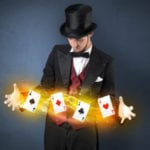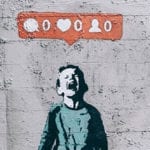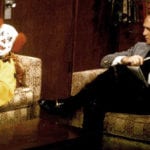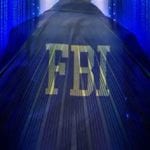 Creepy
Creepy  Creepy
Creepy  Technology
Technology 10 Scientific Breakthroughs of 2025 That’ll Change Everything
 Our World
Our World 10 Ways Icelandic Culture Makes Other Countries Look Boring
 Misconceptions
Misconceptions 10 Common Misconceptions About the Victorian Era
 Mysteries
Mysteries 10 Strange Unexplained Mysteries of 2025
 Miscellaneous
Miscellaneous 10 of History’s Most Bell-Ringing Finishing Moves
 History
History 10 Great Escapes That Ended Right Back in Captivity
 Weird Stuff
Weird Stuff 10 Fascinating Things You Might Not Know About Spiders
 Food
Food 10 Everyday Foods You Didn’t Know Were Invented by the U.S. Military
 History
History 10 Odd Things Colonial Americans Kept at Home
 Creepy
Creepy 10 More Representations of Death from Myth, Legend, and Folktale
 Technology
Technology 10 Scientific Breakthroughs of 2025 That’ll Change Everything
 Our World
Our World 10 Ways Icelandic Culture Makes Other Countries Look Boring
Who's Behind Listverse?

Jamie Frater
Head Editor
Jamie founded Listverse due to an insatiable desire to share fascinating, obscure, and bizarre facts. He has been a guest speaker on numerous national radio and television stations and is a five time published author.
More About Us Misconceptions
Misconceptions 10 Common Misconceptions About the Victorian Era
 Mysteries
Mysteries 10 Strange Unexplained Mysteries of 2025
 Miscellaneous
Miscellaneous 10 of History’s Most Bell-Ringing Finishing Moves
 History
History 10 Great Escapes That Ended Right Back in Captivity
 Weird Stuff
Weird Stuff 10 Fascinating Things You Might Not Know About Spiders
 Food
Food 10 Everyday Foods You Didn’t Know Were Invented by the U.S. Military
 History
History 10 Odd Things Colonial Americans Kept at Home
10 Worst Dirty Tricks In American Politics
Dirty tricks are those political maneuvers that go beyond mere negative campaigning. They involve the secret subversion of an opponent’s campaign via outright lies, spying, or any other tactic intended to divert attention from policies in an underhanded or unethical way. At their best, dirty tricks erode the public’s conference in the political system, and at worst they can cost lives. Below are some of the most notorious dirty tricks in the history of US politics.
10JFK Turns Up The Heat
The 1960 presidential election between Senator John F. Kennedy and Vice President Richard Nixon was one of the closest races in history. It is also notable for being the first election where television played a decisive role in determining the winner.
Nixon and Kennedy had agreed to a series of debates, the first ever aired on live TV. Kennedy had used the new medium of television to great effect during his Massachusetts Congressional races and his campaign team understood how to manage their candidate’s on-screen appearances to maximize his appeal. In contrast, Nixon had occasion to make television appearances while Vice President, but his team had never used the medium during a competitive race.
Prior to the first debate on September 26, 1960, the candidates had agreed that neither would use any makeup. Both Kennedy and Nixon broke this agreement but in very different ways—Kennedy had a layer of professionally applied makeup put on before the debate, but Nixon used an over-the-counter product called “Lazy Shave” to conceal his five-o’clock shadow. On top of that, Nixon’s team knew that their candidate broke a sweat easily, so they set the thermostat keep the studio nice and cool. But Kennedy’s team also knew about the Vice President’s hyperhidrosis and secretly turned the temperature up a few degrees. When the cameras began to roll, the difference between the candidates was striking to audiences watching at home. Kennedy appeared youthful and relaxed, while Nixon, who was only four years older than his opponent, poured sweat and repeatedly had to dry his face with a handkerchief.
The debate was viewed by 70 million people, and later polling showed that over half of voters were influenced by the candidates’ debate performances. Political scientists still argue over the impact of the debate, but given that Kennedy won the election by just over 100,000 votes, a few degrees on the thermostat may have made all the difference.
9The John McCain Love-Child Rumor
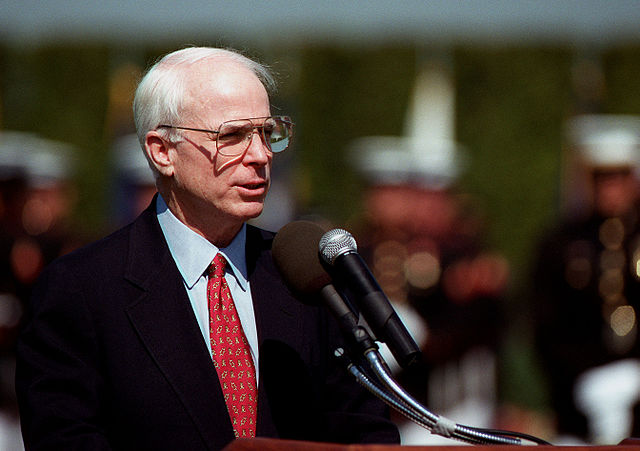
In early 2000, the top contenders for the Republican nomination for president were Governor George W. Bush of Texas and Senator John McCain of Arizona. Bush was better-funded and had the support of the Republican establishment, but McCain’s insurgent campaign had pulled off an upset during the first primary contest in New Hampshire, beating Bush by 19 points. The second primary would be held in South Carolina and if Bush lost there he would likely lose the nomination. Enter Bush’s top campaign strategist, Karl Rove, a man known for his take-no-prisoners approach to campaigning.
Rove’s weapon of choice against McCain would be a tried and tested dirty trick—the whisper campaign. A whisper campaign involves spreading a tawdry or malicious rumor about your opponent—while making sure the rumors aren’t traceable to you. Two weeks before the election, pamphlets began appearing under windshields at candidate debates that used a picture of McCain with his adopted Bangladeshi daughter to allege that McCain had an illegitimate African-American daughter, a charge that could cost him votes in a state that had not entirely left behind its ugly history of segregation.
Next were the anonymous pollsters calling local Republicans and asking them if they would be more or less likely to vote for McCain if he were mentally unstable due to his time as a POW in Vietnam. McCain was so enraged by the vicious attacks that he confronted Bush in person to demand that he stop; when Bush denied responsibility for the smear campaign, McCain replied, “Don’t give me that s**t!” By Election Day, McCain had lost his lead and Bush won by 11 points. With no feasible path to the nomination, McCain dropped out of the race, but he never forgave Bush for the attacks on his family and wartime heroics.
8Lee Atwater
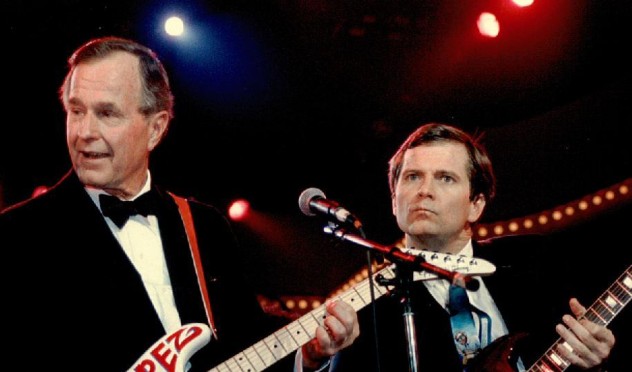
Lee Atwater was the dark master of the dirty trick and he more than deserves an entry all his own. He got his start in his home state of South Carolina, working on the 1978 Senate campaign for notorious segregationist Strom Thurmond. But it wasn’t until 1980 that Atwater’s cutthroat tactics truly came to the fore, when he served as campaign manager for Republican Congressman Floyd Spence in his race against Democrat Tom Turnipseed. Atwater discovered that Turnipseed had undergone electroconvulsive therapy as a teenager to treat a case of severe depression. From then on, when Atwater was asked about Turnipseed at press conferences, he would reply, “I’m not in the habit of responding to people that were hooked up to jumper cables.” Turnipseed tried to direct the focus to the policy differences between the candidates, but by then Atwater had caused enough voters to question Turnipseed’s mental health that he lost the race.
But Atwater’s most ruthless play—one that would ultimately earn him widespread condemnation from Republicans and Democrats—came when he managed George H.W. Bush’s 1998 presidential campaign. Bush’s Democratic opponent was Massachusetts Governor Michael Dukakis, and by the middle of 1988 Dukakis was polling a few points in the lead. It was then that Atwater decided the gloves needed to come off, leading to the infamous Willie Horton commercial.
While governor of Massachusetts, Dukakis had overseen a program that granted weekend furloughs to convicted felons. One of those felons, convicted murderer Willie Horton—who happened to be African-American—was on furlough when he raped a white woman and stabbed her boyfriend. Atwater worked with several outside groups to develop an ad about the furlough program that displayed Horton’s face immediately after an image of Dukakis. The racist overtones of the ad were so apparent that Atwater knew it would be political suicide for the Bush campaign to air it directly. Instead, he contacted several wealthy Republican donors to create a front group called the National Security Political Action Committee, which then “independently” aired the commercial. Atwater’s goal, in his own words, was to “make Willie Horton Dukakis’s running mate.”
When the ad aired, it had the desired effect of linking Horton with Dukakis in the minds of many voters, and when the inevitable charges of racism were leveled against the Bush campaign, they vehemently denied any connection to the ad. The Horton ad made it impossible for Dukakis to shake the label of being “soft on crime” and his campaign went into a death spiral. Come the election, he lost to Bush in a landslide.
Atwater was rewarded for his efforts by being made chairman of the Republican National Committee. However, after only a year in the position, he was stricken with incurable brain cancer. Before the cancer claimed him at age 40, he expressed regret for his ruthless tactics and even sent letters of apology to Turnipseed and Dukakis, though some former Atwater associates have questioned the sincerity of his remorse.
72002 Phone Jamming In New Hampshire
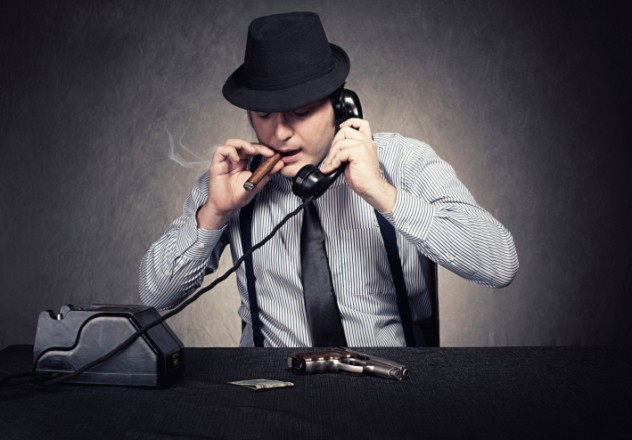
Leading into the 2002 mid-term elections, the Democrats held a one seat majority in the US Senate. Both parties fought tooth-and-nail to defend existing seats and pick up new ones, and perhaps nowhere was more heavily contested than the New Hampshire race between Democratic Governor Jeanne Sheehan and Republican Representative John Sununu.
As the election loomed, Sheehan and Sununu were running within a few percentage points of each other, which meant both sides’ “Get Out the Vote” operations on Election Day would make all the difference. The Democrats’ most important campaign was based around a series of phone banks run by the party and affiliated unions, who would call Sheehan’s supporters to make sure they got to the polls. But on the day of the election, the Democrats’ operations ground to a halt when their phone lines suspiciously went down. By the time the lines were back up, Sheehan’s campaign had lost crucial ground.
The police opened an investigation and uncovered a dirty trick that would land several local Republican officials in prison. Investigators learned that Chuck McGee, the director of the New Hampshire Republican Party, had collaborated with Republican strategist Allen Raymond to hire a telemarketing firm to jam the Democrats’ phone lines. McGee and Raymond were both convicted of conspiracy to commit telephone harassment and sentenced to several months in prison. The regional director of the Republican Party, James Tobin, was also indicted and convicted of conspiracy, but after the Republican Party spent more than $6 million on Tobin’s legal fees, his conviction was overturned on appeal.
As for the election, the phone jamming scheme helped Sununu squeak out a 19,000 vote win over his opponent. But Sheehan would stage a comeback in 2008, when she handily defeated Sununu in a rematch for the Senate seat.
6Thomas Jefferson’s Pamphleteer
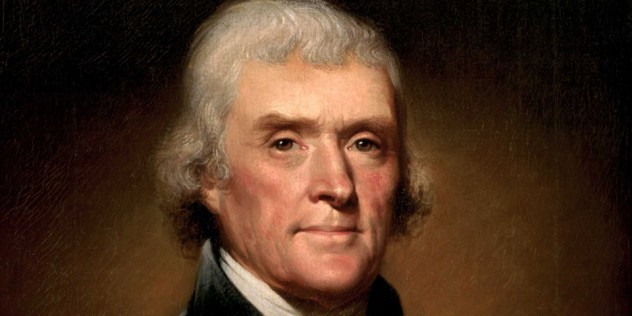
Next time you think that today’s politicians have brought campaigning to a new low, just remember to keep the election of 1800 in mind. Dirty tricks are not a modern invention and none other than Thomas Jefferson pioneered the oldest one in the book—spreading outright lies about your opponent.
In 1800, the United States chose between the Federalist Party’s candidate, incumbent President John Adams, who was associated with a strong central government and the financial industry, and the Democratic-Republican’s candidate, Thomas Jefferson, who was linked with strong support for states’ rights and the agrarian class. The election was a struggle over the young nation’s future, but the campaign had one key difference from modern contests—candidates at the time did not actively campaign, but rather had their supporters advocate on their behalf. In fact, both Adams and Jefferson remained at home for the duration of the campaign.
But don’t think the candidates weren’t playing a central behind-the-scenes role in their campaigns. Jefferson contacted one of his supporters, pamphleteer James Callender, to print a series of vicious tracts spreading lies about Adams. Callender’s publications alleged that Adams planned on going to war with France and that he had a “hermaphroditical character, which has neither the force of a man, nor the gentleness and sensibility of a woman.” Callender’s slanderous attacks damaged Adams’ credibility and helped Jefferson win the election.
Given his role in Jefferson’s victory, it shouldn’t have come as a surprise when Callender wanted a favor from the new president. Jefferson’s former attack dog wanted to ply his skills as postmaster of Richmond, Virginia, but after the contentious election Jefferson wanted to appoint moderates. Callender did not take this rejection well. He retaliated against his former boss with fervor, publishing numerous scandalous pamphlets about Jefferson, including the first print allegations that he fathered children with his slave Sally Hemmings (a fact that would be proved by DNA testing nearly 200 years later). However, aside from tarnishing Jefferson’s public image, he accomplished little with his attacks and died in obscurity.
5Nixon’s Plumbers
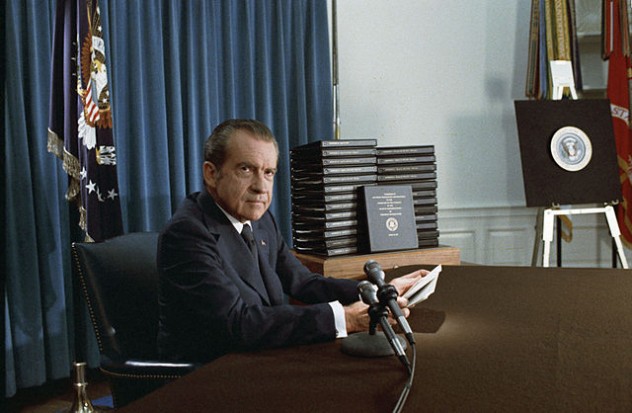
You knew Richard Nixon would be on this list again. This entry deals with an infamous group known as the White House Plumbers, given the name because they fixed “leaks.” The Plumbers were composed largely of former CIA agents, whose activities were funded off-the-books by siphoning money from Nixon’s reelection campaign.
The Plumbers’ first jobs involved preventing leaks of classified documents regarding the administration’s foreign policy. The White House had been rocked by the revelation of the Pentagon Papers—a classified report leaked by State Department employee Daniel Ellsberg showing that Presidents had been lying about the Vietnam War since the days of Eisenhower. In retaliation, the White House ordered the Plumbers to break into the office of Ellsberg’s psychiatrist to find information that could discredit him. The Plumbers also conspired to burn the Brookings Institution, a center-left think tank, because the White House suspected that employees of the organization might be leaking classified State Department documents to the press.
But the Plumbers didn’t just fix leaks. As 1972 neared, the group began to expand their operations to include sabotaging Nixon’s political opponents. The group’s most famous act was the burglary of the Democratic National Committee’s headquarters at the Watergate office complex. Five of the Plumbers were arrested when an observant security guard noticed a strip of tape covering a door latch and called the police. The break-in ultimately led to Nixon’s downfall, as journalists and Congressional investigators continued to probe financial connections between the Watergate burglars and Nixon’s reelection committee and the White House responded by committing bribery, perjury, and obstruction to conceal the truth. The Plumbers’ dirty tricks ended up taking down Nixon rather than his opponents.
4Debategate
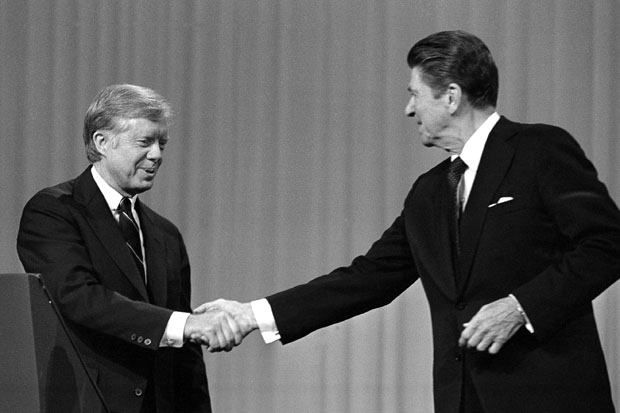
We have another presidential debate and another dirty trick that may have tipped the outcome of an election. In 1980, President Jimmy Carter was fighting for reelection against former California Governor Ronald Reagan. By late 1980, Carter had recovered from devastatingly low approval ratings caused by his handling of the Iran Hostage Crisis and was running neck-and-neck with Reagan. Carter repeatedly refused his opponent’s requests for a debate, leading to Regan pointedly debating a third-party candidate instead. But Carter finally relented, and the only debate between the candidates was set to take place exactly one week before the election.
The Carter campaign was busy preparing when it received a shock—a copy of the campaign’s debate prep book outlining the president’s strategy and talking points had been stolen from the White House and delivered to Reagan’s campaign headquarters. During the subsequent debate, Reagan handled himself ably, delivering several witty rejoinders to Carter’s attacks, while Carter fumbled a question about nuclear arms. Reagan pulled ahead of Carter after the debate and went on to win the election in a landslide. As for Carter, he still feels that the theft of his debate prep book contributed to his loss that November.
The controversy surrounding the theft, which became known as “Debategate,” did not end with the election. The FBI opened an investigation to find the culprit, while a Congressional subcommittee conducted a separate investigation into the matter. The strongest suspect at the time was Reagan’s campaign manager, Bill Casey, who went on to lead the CIA during the 1980s, but neither the FBI nor the Congressional subcommittee were ever able to identify the thief.
A more recent theory contends that Paul Corbin, a Democratic strategist and close friend of the Kennedy family, was behind the theft. According to this theory, Corbin was still bitter about the brutal campaign between Carter and Senator Ted Kennedy for the Democratic Party’s nomination, and out of spite he photocopied the debate prep book and delivered it to Bill Casey. This theory has its doubters, but is supported by the fact that Corbin visited Reagan’s campaign headquarters three times immediately before the debate.
3The Morey Letter

The 1880 presidential election between Congressman James Garfield and General Winfield Scott Hancock saw a dirty trick that played on the popular prejudices of the time. In those days there was widespread prejudice against Chinese immigration, although Chinese-Americans constituted less than one percent of the population. It was amidst this atmosphere that a bombshell rocked the campaign when, just days before the election, a letter signed by Garfield was discovered and published in a New York newspaper. In the letter, known as the Morey Letter after its intended recipient, Garfield proclaimed his support for unregulated Chinese immigration to the United States.
The letter caused an uproar and, in a response that would be remarkable today, Garfield held off making a statement because he wasn’t immediately sure whether he had actually penned the letter or not. While Garfield’s aides combed through his files to see if he had in fact written the missive, Hancock’s supporters savaged Garfield in the press, claiming that his policies would cause a wave of immigration that would cost Americans their jobs.
Garfield’s aides finally confirmed that the letter was a forgery a week after the story broke and the campaign went into damage control mode. In a move that he should have probably taken when the story first broke, Garfield provided newspapers with a copy of an old letter he had written so they could publish it alongside the Morey Letter and readers could compare his handwriting and signature for themselves. Garfield’s response managed to stem the outrage caused by the initial release of the forgery and he went on to narrowly win the election by a mere 2,000 votes—though historians believe the Morey Letter made the election much closer than it would otherwise have been, costing Garfield victory in California and Nevada.
2Brooks Brothers Riot

The 2000 presidential election between George W. Bush and Al Gore was one of the closest in US history, ultimately decided at the Supreme Court. The day after the election, neither candidate had reached the magic number of 270 electoral votes needed to win, since the vote tally in Florida was too close to call. Bush maintained a lead of 1,784 votes on election night but a mandatory recount narrowed his lead to just a few hundred votes. Then, Gore’s campaign used a provision in Florida law to request that several counties perform a manual recount. It was against this backdrop that a miniature riot helped shut down the recount.
On November 18, 2000, the Miami-Dade County election department was furiously sifting through piles of votes by hand in order to meet the Florida Supreme Court’s deadline. In response, the Republican Party used its national infrastructure to organize a protest with the goal of shutting down the recount. Hundreds of angry protesters showed up at the election office, shouting and pounding on the glass doors of the building. Election officials stopped the public recount and continued their work in a small room out of public view. It was this move that triggered what would become known as the Brooks Brothers Riot, named after the line of conservative business wear stereotypically associated with the Republican establishment.
The protesters, some of whom were later identified as staff members of Republican Congressmen, entered the building and beat on the door where the recount was taking place, with some officials claiming they were shoved or hit when they tried to speak to the protesters. The disorder contributed to the county election board’s decision to stop the recount. The whole issue became moot a few weeks later, when the US Supreme Court ruled that Florida’s recount violated the Equal Protection Clause and ordered an immediate halt, which in effect delivered Bush the election. As for those protesters at the county election department, many later went on to land positions in the Bush administration.
1Nixon Sabotages The Paris Peace Talks
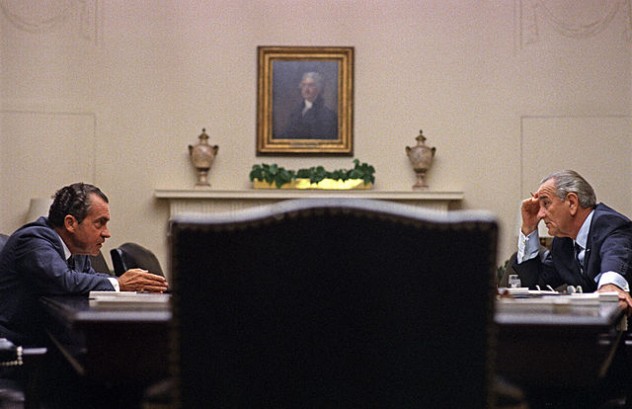
We top out our list with a callous political move that condemned thousands of American soldiers to death. By 1968 the Vietnam War had been in full swing for four years. In March, President Lyndon Johnson ordered a limit to US bombing of North Vietnam in order to open up peace talks. Nixon, who promised he had a secret plan to win the war, knew that any peace agreement concluded before the election would devastate his chances of winning the presidency. So Nixon decided to relay a secret message to the President of South Vietnam, Nguyen Van Thieu, claiming that he would secure a better deal for South Vietnam if he won the election. Thieu—who figured he had little to lose, since he could pursue a deal regardless of who won the election—backed out of the peace talks at the last minute.
President Johnson became aware of Nixon’s machinations when NSA wiretaps of South Vietnam’s US ambassador revealed the plot. Johnson was furious at what he considered Nixon’s traitorous actions but he was prevented from publicizing it for fear of alerting the South Vietnamese that their ambassador’s communications were being monitored. That doesn’t mean that Johnson just sat idly by—he used every backroom channel available to thwart Nixon. Johnson ordered the FBI to place Nixon’s campaign under surveillance and relayed the details of the plot to Democratic nominee Hubert Humphrey, so that his campaign could publicize Nixon’s treachery. However, Humphrey’s aides believed he would handily win the election, and the campaign saw no need to make the shocking accusation that a presidential candidate had engaged in treason.
Meanwhile, the Nixon campaign continued to berate the Democrats for failing to make any progress in resolving the Vietnam War. Nixon even had the gall to offer to travel to South Vietnam to get Thieu back to the negotiating table (we can only imagine how productive that meeting would have been). Nixon ultimately went on to win the election by less than one percent, at which point it turned out that his secret plan for peace in Vietnam was to intensify the US bombing campaign and to expand the war into neighboring Cambodia and Laos. In 1973, the US would reach a peace deal with North Vietnam under much of the same terms as those discussed in 1968. Over 22,000 American soldiers died in those five years, along with countless more Vietnamese, Cambodians, and Laotians—proof that sometimes dirty tricks can have a death toll attached to them.
Anthony is a full-time attorney and a part-time compiler of knowledge in list form. He resides in the vast urban sprawl outside of Las Vegas.



